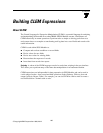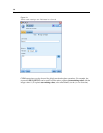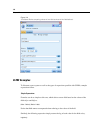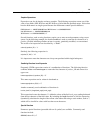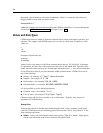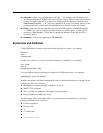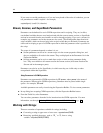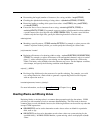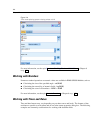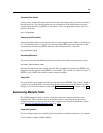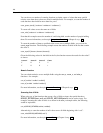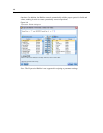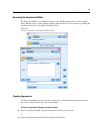
112
Chapter 7
If you w ant to override precedence, or if you are in any doubt of the order of evaluation, you can
use parenthes
es to make it explicit— f or example,
sqrt(abs(Signal)) * (max(T1, T2) + Baseline)
Stream, Session, and SuperNode Parameters
Parameters can be defined for use in CLEM expressions and in scripting. They are, in effect,
user-defined variables that are saved and persisted with the current stream , session, or SuperNode
and c an be accessed from the user interface as well as thr ough scripting. If you save a stream, for
example, any parameters set for that stream a r e also saved. ( This distinguishes them from local
script variables, which can be used only in the script in which they are declared.) Parameters are
often used in scripting as p art of a CLEM expression in which the parameter v alue is specified in
the script.
The scope of a parameter depends on where it is set:
Stream paramete r s can be set in a stream script or in the stream properties dialog box, and
they are available to all nodes in the stre am. They are displayed on the Parameters list in the
Express ion Build er.
Sessio n parameters can be set in a stand-alone script or in the session parameters dialog
box. They are avail able to all streams used in the current session (all streams listed on the
Streams tab in the managers pane).
Parameters can also be set for SuperNodes, in which case they are visible only to nodes
encapsulated within that SuperNode.
Using Parameters in CLEM Expressions
Parameters are represented in CLEM expre ssions by $P-pname, where pname is the name of
the parameter. When used in CLEM ex pressions, parameters must be placed within sing le
quotes––for example , '$P-scale'.
Available parameters are easily viewed using the Expressio n Builder. To view current parameters:
E In any dialog box accepting CLEM expressions, click the Expression Builder button.
E From the Fields list, select Parameters.
You can select parameter s from the list for insertion into the CLEM e xpression . For more
informa tion, see the topic Selecting Fields, Para meters, and Global Variables on p. 121.
Working with Strings
There are a num ber of operations available for strings, including:
Converting a string to upper case or lower cas e—uppertolower(CHAR).
Removing specified characters, s uch as `ID_` or `$`, from a string
variable—stripchar(CHAR,STRING).




